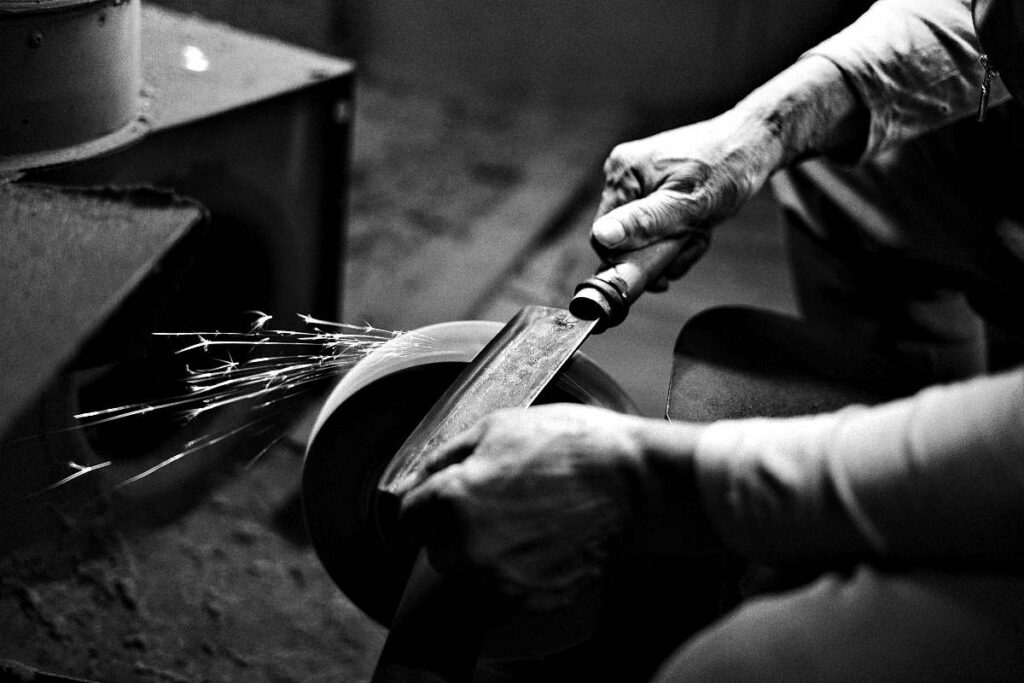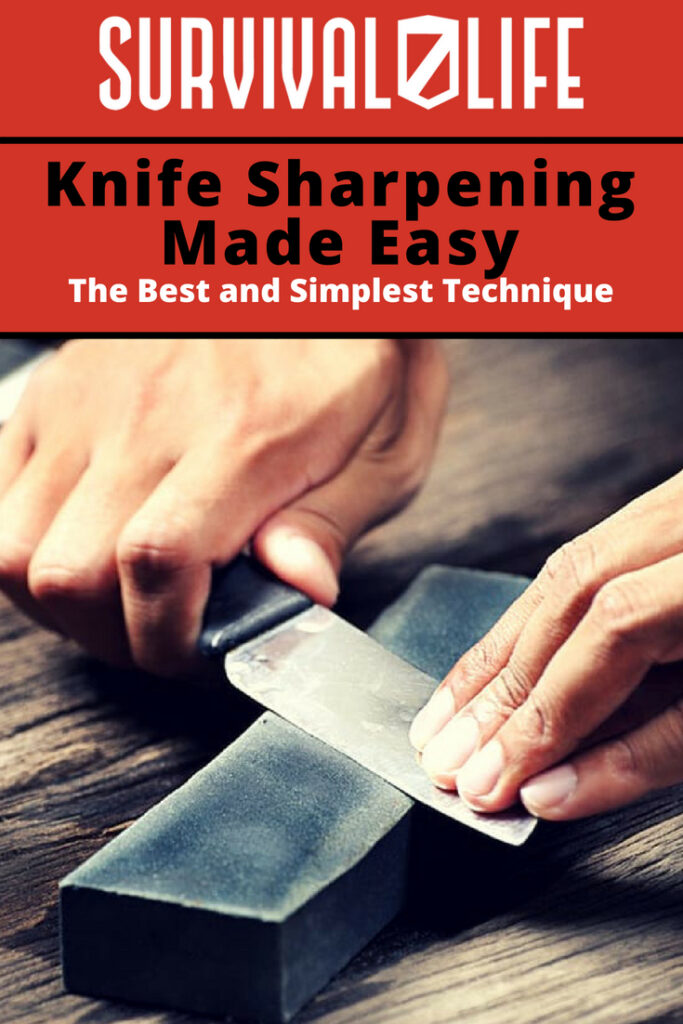Improve your knife sharpening skills with these simple tips and make your blade the reliable tool that it is! In this article, you will learn the basics of knife sharpening, including the importance of getting the proper sharpener, knowing the angle you need to sharpen on, preparing your stone, and using proper knife sharpening techniques. You will also discover common mistakes to avoid, expert advice for maintaining long-lasting sharpness, and recommendations for sharpening frequency. By following these tips, you’ll be the go-to person when it comes to having a sharp knife.
Knife Sharpening | The Best & Simplest Technique
The Basics of Knife Sharpening
So your knife is dull as a dog biscuit, huh? And you want to do something about it, but don’t know where to start?
You have found the right article, my friend. Sharpening a knife is a lot like many of these skills that fall into the self-reliance category.
It’s something that virtually everyone could do just a few short years ago. With that in mind, I would like to point out the basics of how to sharpen knives correctly.
If you take the time to watch the video at the end of this post, you will also see some of these in practice with various knife sharpening devices.
To sharpen any knife, you need to go through the same basic steps: getting the proper sharpener, knowing the angle you need to sharpen on (this is really important), preparing your stone, and actually using proper knife sharpening techniques.
Get a Proper Sharpener

There are tons of knife sharpeners out there, and which one you get is dependent upon the experience and confidence level that you possess. You can get one as simple as a handheld sharpener, diamond sharpener, or stones.
The handhelds are for those of us who do not feel confident in our skill and want something that gets the angle correct each time and is safe to use. The diamond sharpeners and stones come in various grades of coarseness.
If you have an incredibly dull knife, you are going to need to utilize a coarse stone. A very coarse stone will take off much more material than a fine stone will.
Personally, I have a coarse stone and a fine stone as you can see in the video.
Know Your Bevel Angle

This is the angle on the sharp side of your blade. You will notice that some knives have a steep angle right at the sharp side, others have an angle that basically slopes all the way to the back of the blade.
A general consideration is that most of your thin knives, like a mora brand or fillet style knife, will not have a much actual angle.
Whereas, thicker blades will have a much steeper angle. Keep in mind that a good rule of thumb for sharpening is 20 degrees.
I have always laid two dimes down on the stone and then rested the knife on them to get a good idea of this angle.
Prep Your Stone

Do not feel as if you need to get too fancy here. In the video, you will see I discuss using nothing more than spit on the stone to get the desired effect.
Honing oil has its uses, however, mostly it makes a knife slip a bit too much for my liking. A good rule of thumb, if you determine you need to lubricate your stone, is to use a water-based lubricant (spit or water) on the diamond stones and then use oil on Arkansas and similar stones I discuss in the video.
With that said, I rarely use oil when sharpening, and my knives are sharp as razors.
Proper Technique

Have you ever sliced or watched someone slice the Thanksgiving turkey? If so, you already have a leg up on sharpening a knife.
Whether you are using a stone or diamond sharpener, imagine you are slicing off a thin sliver of the stone. You should always start the blade near the handle and then slice toward the tip.
Remember, slice off a small sliver of the stone.
There you have it! Even these basic tips will have your knife sharpening service and skills level up a notch.
By reading this and then watching the video, I want you to be the person everyone looks up to when needing a sharp knife.
Common Mistakes to Avoid
Over-Sharpening and its Consequences
Believe it or not, it’s possible to over-sharpen a knife. Excessive sharpening can thin out the blade, compromising its structural integrity and longevity.
Using Incorrect Angles
Maintaining the correct sharpening angle is essential. Using the wrong angle can lead to uneven sharpening, affecting the knife’s performance.
Tips from the Pros
Expert Advice for Long-Lasting Sharpness
Professional chefs recommend regular honing and occasional sharpening to maintain knives at their best. Developing a routine will keep your knives in top shape.
Recommended Sharpening Frequency
The frequency of sharpening depends on how often you use your knives. Heavy usage may require sharpening every few weeks, while occasional use can extend the time between sharpening sessions.
Do you have your own technique for knife sharpening? We’d love to hear from you in the comments section below!
UP NEXT:
- Knife Sharpening Tools | A Must-Have For Your Blade
- Buck/Hood Punk Fixed Blade Survival Knife Review
- 10 Best Loans And Grants To Jumpstart Your Off-Grid Lifestyle
Follow us on Facebook, Instagram, Twitter, Tumblr, and Pinterest!

Editor’s Note: This post was originally published on August 15, 2014, and has been updated for quality and relevancy.
I’m Alex, the author behind True Survivalist. As a survival enthusiast myself, I’ve created this website to serve as a valuable resource for fellow survivalists and preppers. Whether it’s understanding survival situations, emergency preparedness, or finding the right survival gear, I’ve got you covered. Through a series of informative guides, I aim to provide answers to commonly asked questions, debunk common myths, and help you avoid common mistakes. At True Survivalist, I believe in equipping you with the knowledge and tools you need to be prepared for any survival scenario. Join me on this journey of self-reliance and resilience.